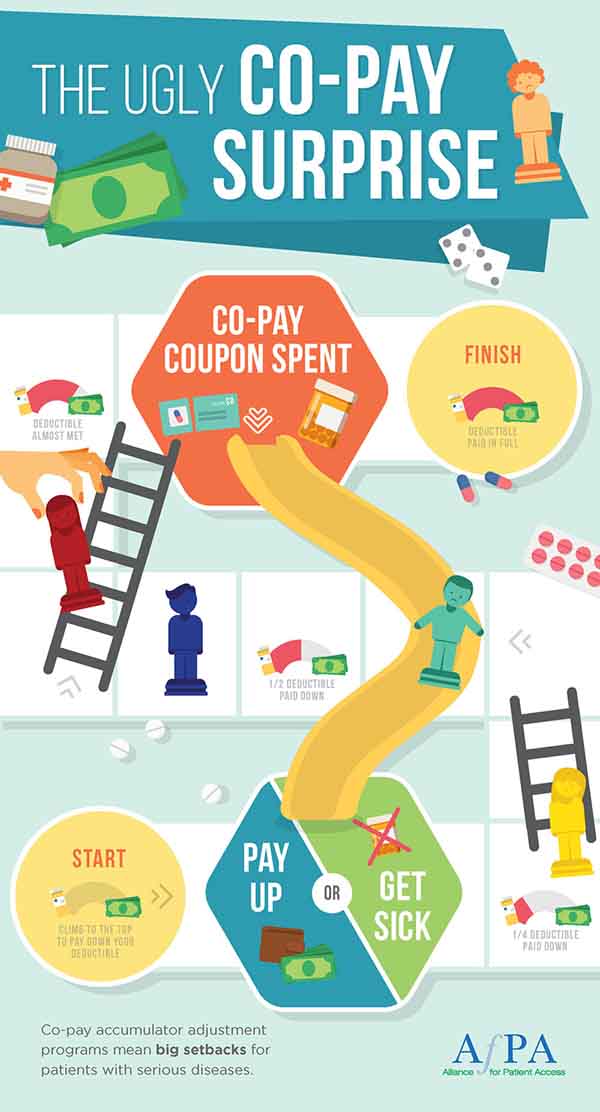Access to Safe, Effective and Affordable Medications and Treatment Options
Allergy & Asthma Network supports patient access to safe, affordable and effective medications and treatments. We know that medications and treatments are essential to manage chronic conditions such as allergies and asthma.
Lack of access to affordable medicines has led to patients not filling a doctor’s prescription, reducing the dosage to make a supply last longer, buying medicines from foreign countries or substituting alternative therapies. Patients sometimes make these decisions about their treatment due to challenges with:
- prior authorization requirements
- limited and changing drug formularies
- specialty tiers and co-pay accumulators that shift costs to patients
For this reason, we monitor these issues and advocate on behalf of people with allergies, asthma and related conditions. Below is more detailed information about current issues that impact patient access to safe and affordable medications and treatments.
What is step therapy (fail first)?
Step therapy is a practice health insurance plans use to manage the cost of medications. These insurance policies require the least expensive drug to be prescribed to a patient first, rather than the medicine originally prescribed by the doctor. This practice can result in serious negative consequences for consumers and the public health system. By limiting the medication options, both doctors and patients are forced to compromise their treatment decisions in a way that is dangerous, time consuming and more expensive in the long-term. Asthma medications are especially prone to step therapy because health plans frequently change the list of preferred medicines they will cover. Therapies prescribed by a healthcare provider are centered around patient care, and shared decision-making follows after the patient and provider establish a trusted relationship. When insurers interfere in this process any change in the course of treatment can jeopardize a patient’s well-being.
What is non-medical switching?
Non-medical switching occurs when patients on stable therapies are switched off their medication by their health insurers. This is done by:
- Assigning a higher co-pay to the medication;
- Increasing patients’ out-of-pocket requirements;
- Reducing the maximum plan coverage amount for prescription medications;
- Eliminating coverage for certain medications; and
- Formulary changes for non-medical reasons.
Every patient is unique, and it can take years for patients and their doctors to find the right treatment, particularly patients with chronic conditions like asthma or severe allergies. These patients rely on a stable medication regimen to live healthy and experience no or minimal impact to their quality of life.
Unexpected changes in medications can lead to a return of symptoms, increased healthcare costs, and even death. In the cases of asthma and allergies, important considerations about appropriate therapy are not only related to the medication selected, but also the delivery device that is used. It is important for patients and their physicians to remain in control of treatment decisions, rather than an insurer, government, pharmacy or other third parties.

Physician’s perspective: asthma and non-medical switching
Asthma’s prevalence has more than doubled in recent decades, yet the disease remains highly individualized. Patients’ triggers, the severity of their symptoms, their ability to manage their condition, and their success with different treatments and delivery mechanisms varies.
While clinicians recognize this fact, health plans may not. Insurance coverage models too often embrace a one-size-fits-all approach that generalizes care based on rigid disease-state algorithms that prioritize the lowest-priced treatment options. The approach incorrectly assumes that patients are interchangeable, and that children are just small adults.
Increasingly, insurance companies and even pharmacies may drive changes in asthma medication or delivery device that are unnecessary, expensive and even dangerous for patients.
Download the Paper: Asthma and Non-Medical Switching
Co-pay accumulator adjustment programs
Not everyone can afford the medication they need. To make drugs more accessible, manufacturers sometimes provide co-pay coupons to help patients cover their out-of-pocket pharmacy expenses.
Manufacturers have issued co-pay coupons since the mid-2000s, but they have become more common in recent years. The amount of prescriptions paid for using coupons reached 19 percent in 2016.
Most drugs that have co-pay coupons don’t have lower-cost generic alternatives. For the few that do, these alternatives may not suit the unique characteristics of a patient’s medical history or disease state. Or, a patient has already tried the less expensive option and found it ineffective.
In addition, health plan use a cost-cutting approach called accumulator adjustment programs. These programs still take co-pay coupons but don’t take the cost off your deductible, which can cause an expensive out-of-pocket bill.

Physician’s perspective: co-pay accumulator adjustment programs
Regardless of what may be available, doctors should be trusted to prescribe the most appropriate medication for their individual patients. And when a doctor prescribes a costly regimen, until recently, patients could depend upon co-pay coupons to count toward their yearly out-of-pocket deductible. Many patients relied on this arrangement to access their medications.
Yet for patients across the country, that reality is changing.
Download the Paper: CoPay Accumulator Adjustment Programs
Value-based contracting
Some patients reap a benefit from breakthrough drugs, others do not. Insurers can reduce their financial risk and give patients access to the innovative prescription drugs their doctor prescribes using a concept called value-based contracting.
Infographics


Advocacy News & Articles
Allergy & Asthma Network Commends EPA for Stronger Car Emission Standards
Breathing clean, healthy air is essential for everyone. The new EPA standards for vehicles will help protect respiratory health and address climate change.
Allergy & Asthma Day Capitol Hill is May 8: Register Now!
Join us for the 27th annual advocacy day to connect with members of Congress and support people living with asthma, allergies and related conditions.
Allergy & Asthma Network Applauds EPA’s Final Rule on Methane Standards
EPA’s new standards would reduce methane and other harmful air pollution that impacts climate change.
USAsthma Summit 2023: Is Asthma Remission Possible?
Hear from asthma specialists and state asthma programs on how to improve access to asthma management and treatment.
Family Asthma Act Reintroduced in Congress
The Family Asthma Act, named after the late Congressman from Baltimore, would strength the nation’s public health response to asthma.
Wisconsin Becomes First State to Update Its Stock Epinephrine Law
Wisconsin Gov. Tony Evers has signed into law a measure that expands the availability of epinephrine – and who can administer it – in schools and other public spaces.






